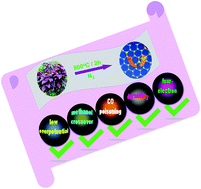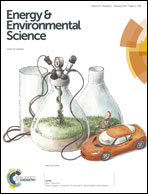Transforming organic-rich amaranthus waste into nitrogen-doped carbon with superior performance of the oxygen reduction reaction†
Abstract
We present a cost-effective approach to dispose of amaranthus waste (the discarded leaves and stalks of amaranthus and the extract remains of natural amaranthus red) to yield nitrogen-doped carbon. Amaranthus waste is a natural, abundantly available, and yearly renewable source, acting as a single precursor for nitrogen (mainly from the lysine-rich amino acids) as well as carbon. It therefore eliminates the need for multiple hazardous chemicals including organic precursors for similar synthesis processes. Our facile experimental strategy without any activation supports reasonable nitrogen doping in porous carbon along with a high surface area and excellent conductivity, which leads to a superior electrocatalytic oxygen reduction activity and proves to be a promising alternative for costly Pt-based electrocatalysts in fuel cells in terms of excellent electrocatalytic performance, high selectivity, and long durability. This judicious transformation of organic-rich waste not only addresses the disposal issue, but also generates valuable functional carbon materials from the discard. Our as-synthesized carbon will certainly be believed to be a trend setter and have greater economic ramifications by creating value-added materials from waste.


 Please wait while we load your content...
Please wait while we load your content...